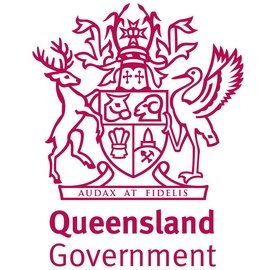Intended as an accountability and transparency measure, My School has been widely slammed for being little more than a de facto league table that has punitive effects on under-resourced schools, however experts on NAPLAN and assessment claim that if used responsibly, the updated version of the site could be more useful in the future.
Western Sydney University senior lecturer in History Education Dr Kay Carroll acknowledges My School has been a contested site for parents, schools and students since its creation in 2008 under the then Labor Government.
“Intended as a transparent site for parents to understand how their local school performs by reporting NAPLAN data across schools, within schools and at state and national levels, [for 2023] it’s been updated to show data from pre-2023 and post-2023 as the national standards and scales have changed,” Carroll, who is also director of the Secondary Teaching Program at Western Sydney University, tells MCERA.
“It is now using a single scale for all Years 3, 5, 7 and 9 to make it easier for parents to [comprehend] learning growth over time.”
The issue with the change, however, is the loss of longitudinal data from prior to 2023, which is also compounded by the loss of data due to the cancellation of the national test in 2020 with the COVID pandemic, Carroll adds.
“My School – which compares schools using Index of Community Socio-Educational Advantage (ICSEA) – is still a tool that ranks schools that are similar,” she says.
“The question remains, however, how useful this is for parents to understand the reliability of NAPLAN.”
Carroll says what most parents do not realise, is that schools use a range of data-informed tools to unpack their students’ NAPLAN results and analyse domains and skills for improvement.
“My School is not used by teachers to diagnose or plan,” she says.
“Therefore, the question remains do we need to compare schools and students or get to the heart of the learning?
“To what extent is this a reliable snapshot of Australian students’ literacy and numeracy capabilities and who is not being represented and included in the picture?”
Professor Beryl Exley is an experienced classroom teacher and lecturer with the School of Education and Professional Studies at Griffith University.
She says NAPLAN’s numerical score for a point-in-time assessment, which covers a lot of concepts in relatively short tests, provides neither higher level skills nor diagnostic information, and so “teacher assessments and observations are more useful for identifying the learning needs of students who need support and students who need extension”.
“NAPLAN is [also] based on the year level, not the student’s chronological age,” Exley, a member of the Griffith Institute for Educational Research (GIER), and a panel chair for AITSL initial teacher education program accreditations, tells MCERA.
“The impact of age as a variable is more pronounced in the primary years where students in Year 3, for example, range from seven-and-a-half to eight-and-a-half years of age.
“This extra year of life experiences is not factored into an individual’s NAPLAN scores.”
Exley says NAPLAN data could be made more useful by providing the statistics and visuals that compare performance against variables such as socio-economic status, geographical location or students who represent diverse populations.
“The OCED leads the way in this regard, showing that Australia has a high-quality education system with a long tail of inequity,” she says.
“The long tail of inequity is directly linked to family socio-economic status.”
Associate Professor Don Carter, from the University of Technology Sydney, has worked in a range of positions including teaching English (government and non-government schools), head of department, ESL consultant, inspector of schools and as a teacher education academic.
He believes accountability, transparency and the provision of meaningful data are all essential, and while the My School website is an important apparatus in the Federal Government’s monitoring and auditing of schools, he says the website “overpromises”.
“The central aim to ‘track student performance over time and identify schools that have been successful in achieving significant progress for their students’ implies that the data on the site and the NAPLAN test results provide rich insights into a child’s and a school’s ‘progress’,” Carter explains.
“This is misleading and controversial because the tests focus only on a narrow set of skills and potentially lead to the compilation of league-like tables.
“The site claims to help parents/caregivers and the community ‘understand the performance of schools over time’ and to ‘understand student educational progress at certain points’."
Both these statements are problematic, according to Carter.
“It is difficult to measure a school’s overall ‘performance’,” he says.
“All the NAPLAN tests can do is to compare student performance to previous years and performance across schools.”
The second statement, he argues, reduces the notion of ‘educational progress’ to test results and ignores the fact that the tests are based on the assessment of a narrow set of skills, rather than the broader academic progress of students and their social and emotional development.
“Parents are provided with basic information such as school attendance, finances, funding and the ICSEA scale. These are useful but only provide a partial portrayal of student and school performance.
“The site rightly advises that parents talk to the school directly to strengthen their understanding about the school.
“The data on a specific school can only be understood by exploring the school’s website, annual report and talking to the school’s teachers.”
Carter says the description of the site’s intended role needs to be revised to reflect its purpose more accurately.
“The site should provide a more comprehensive and accurate profiling of schools to provide a stronger sense of what a school ‘offers’ – to tell a more complete story,” he says.
“What programs are conducted across a school to address the range of student interests and needs?
“The profiles should aim to report on how a school serves the needs of its local community, rather than merely the results of a national/generic test.”















